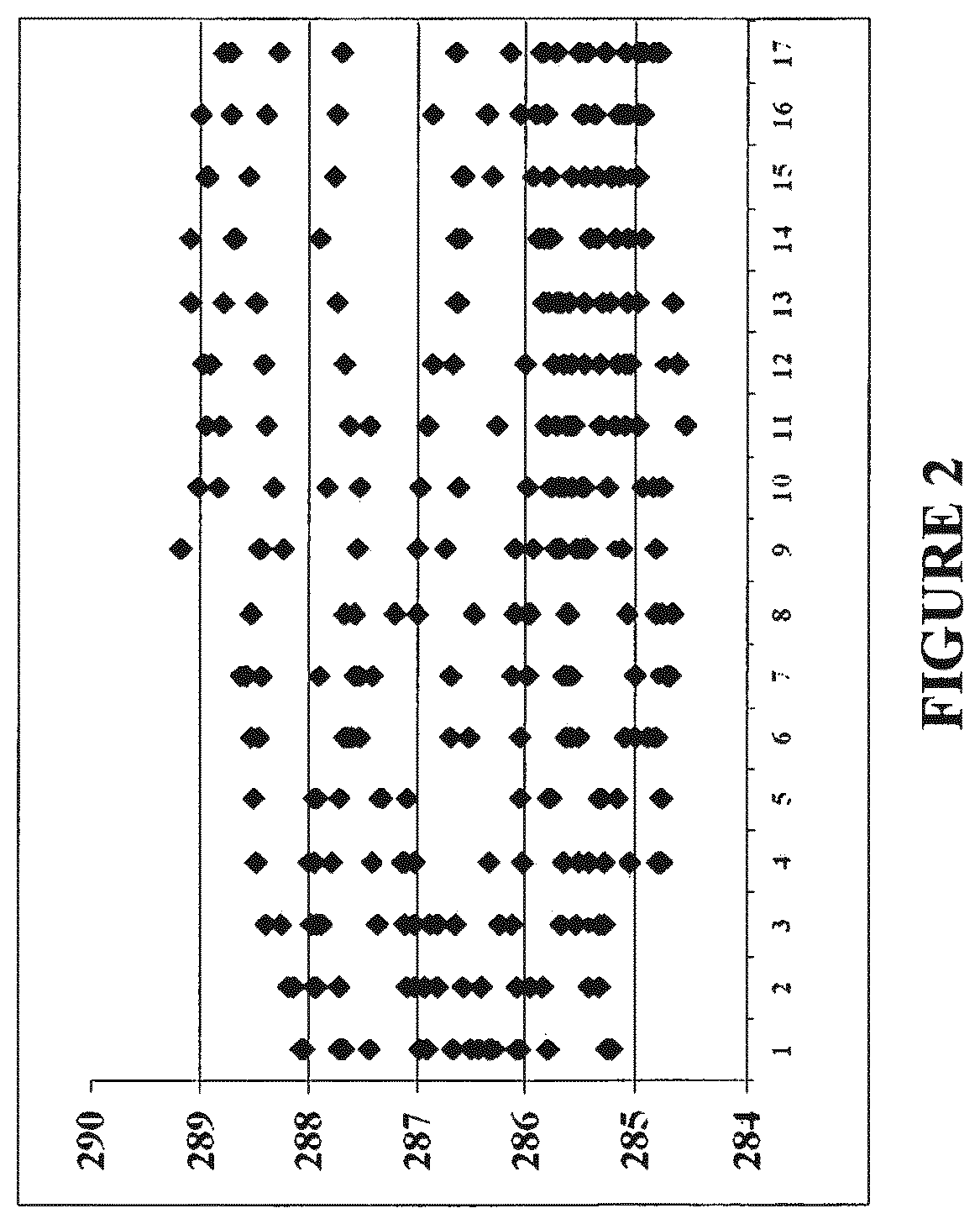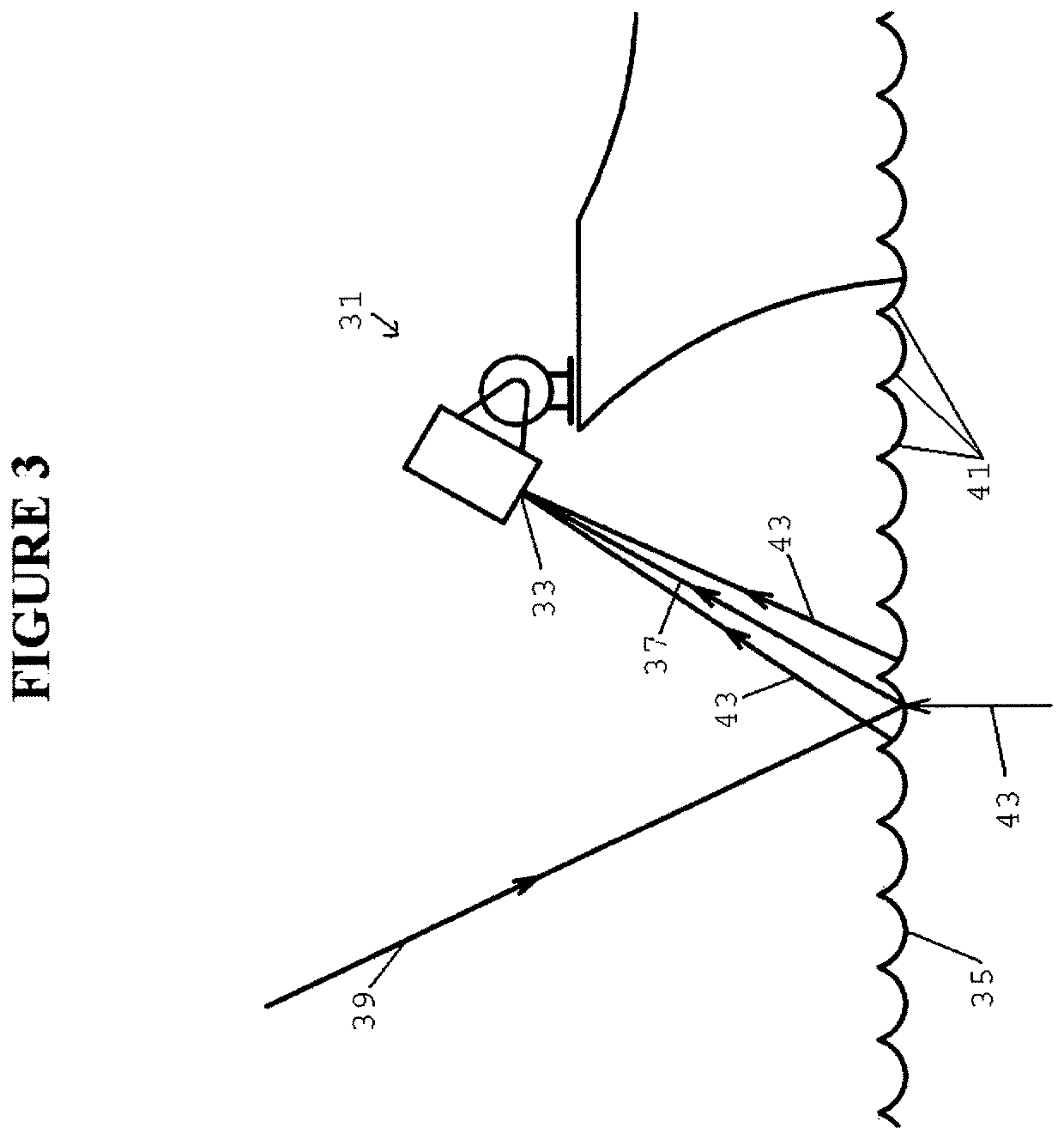Apparatus and methods for remote measurement of sea surface temperature
a technology of remote measurement and sea surface temperature, applied in the direction of measurement devices, instruments, optical radiation measurement, etc., can solve the problems of inaccurate measurement of sea surface skin temperature, deficiency in some aspects, and rise in sea surface temperatur
- Summary
- Abstract
- Description
- Claims
- Application Information
AI Technical Summary
Benefits of technology
Problems solved by technology
Method used
Image
Examples
Embodiment Construction
[0052]FIG. 3 depicts the sea-viewing measurement apparatus of this invention. Infrared camera system 31 is preferably located on a suitable location of a sea going vessel or structure. In use on ships, the bow area is preferred location to observe the sea surface undisturbed by the motion of the ship that stirs and mixes the water. Camera 33 is pointed downward to sea surface 35 to capture an image of the surface. The camera pixels are calibrated in equivalent blackbody temperature of the received flux. This flux includes a small contribution from reflected flux 37 from downwelling sky radiation 39. The pixels in the image originate from varying slopes of the waves 41 on the sea surface, and contain differing amounts of upwelling emission from the sea 43 and the reflected sky flux 37 contribution, as defined by Fresnel's Equations.
[0053]FIG. 4 illustrates data indicative of reflections from sea water for orthogonal polarizations in the plane of (45) and perpendicular to the plane of...
PUM
 Login to View More
Login to View More Abstract
Description
Claims
Application Information
 Login to View More
Login to View More - R&D
- Intellectual Property
- Life Sciences
- Materials
- Tech Scout
- Unparalleled Data Quality
- Higher Quality Content
- 60% Fewer Hallucinations
Browse by: Latest US Patents, China's latest patents, Technical Efficacy Thesaurus, Application Domain, Technology Topic, Popular Technical Reports.
© 2025 PatSnap. All rights reserved.Legal|Privacy policy|Modern Slavery Act Transparency Statement|Sitemap|About US| Contact US: help@patsnap.com



